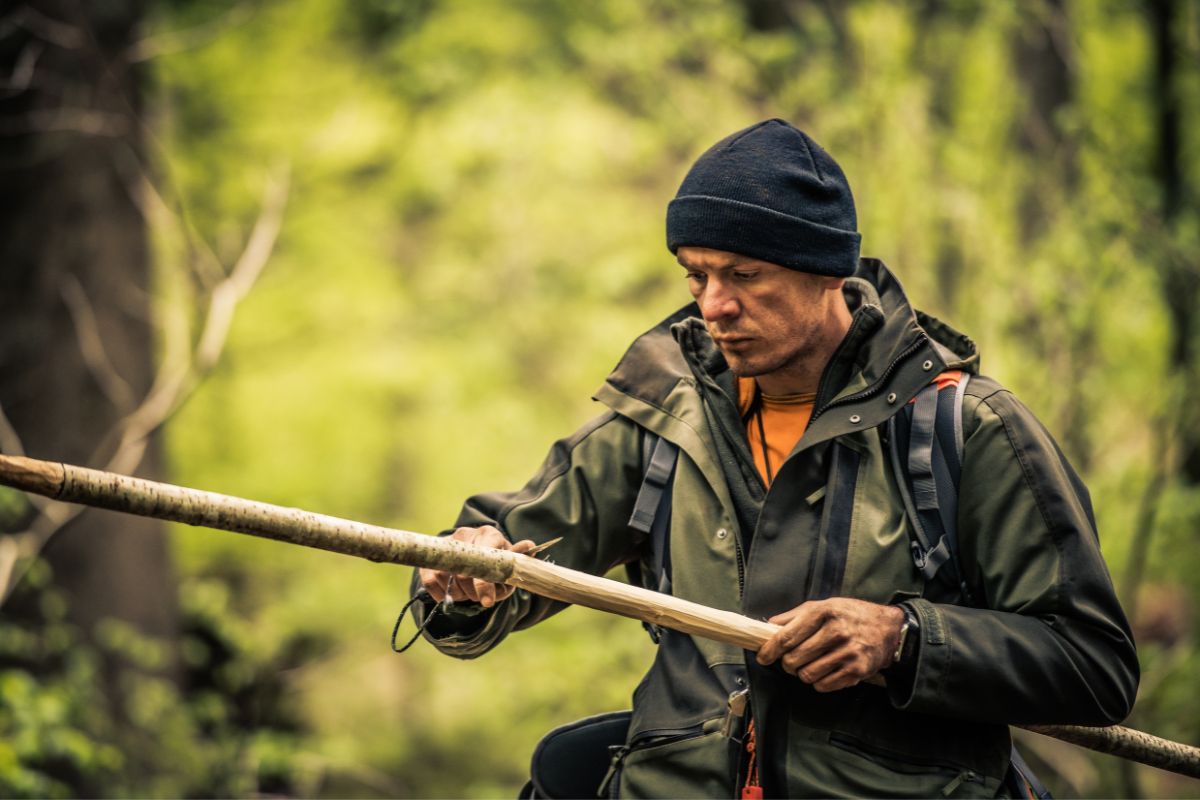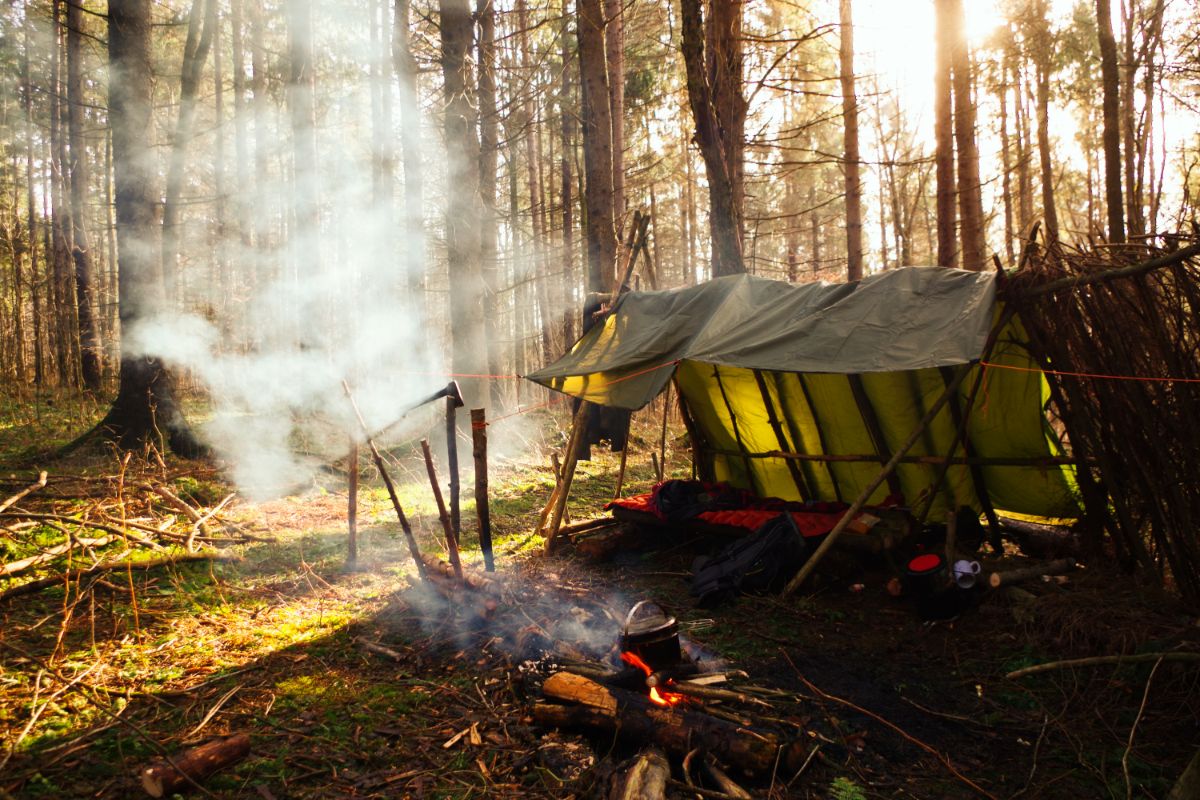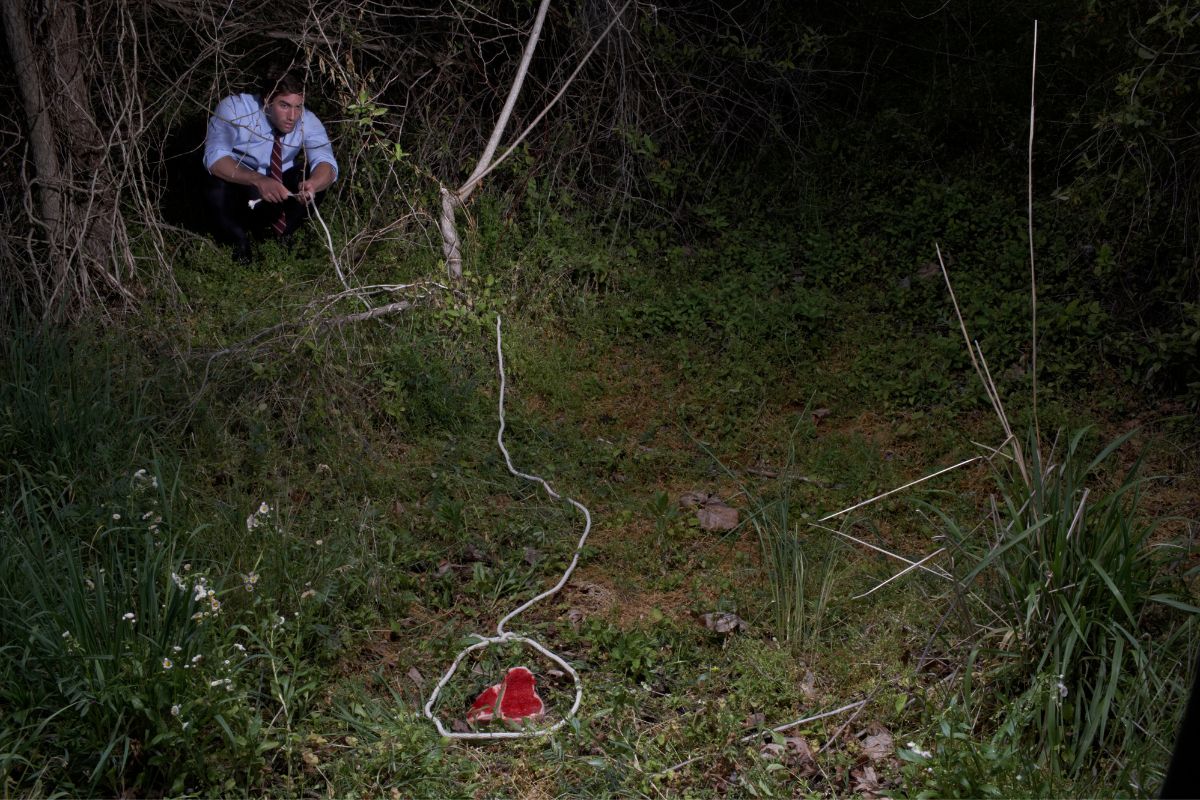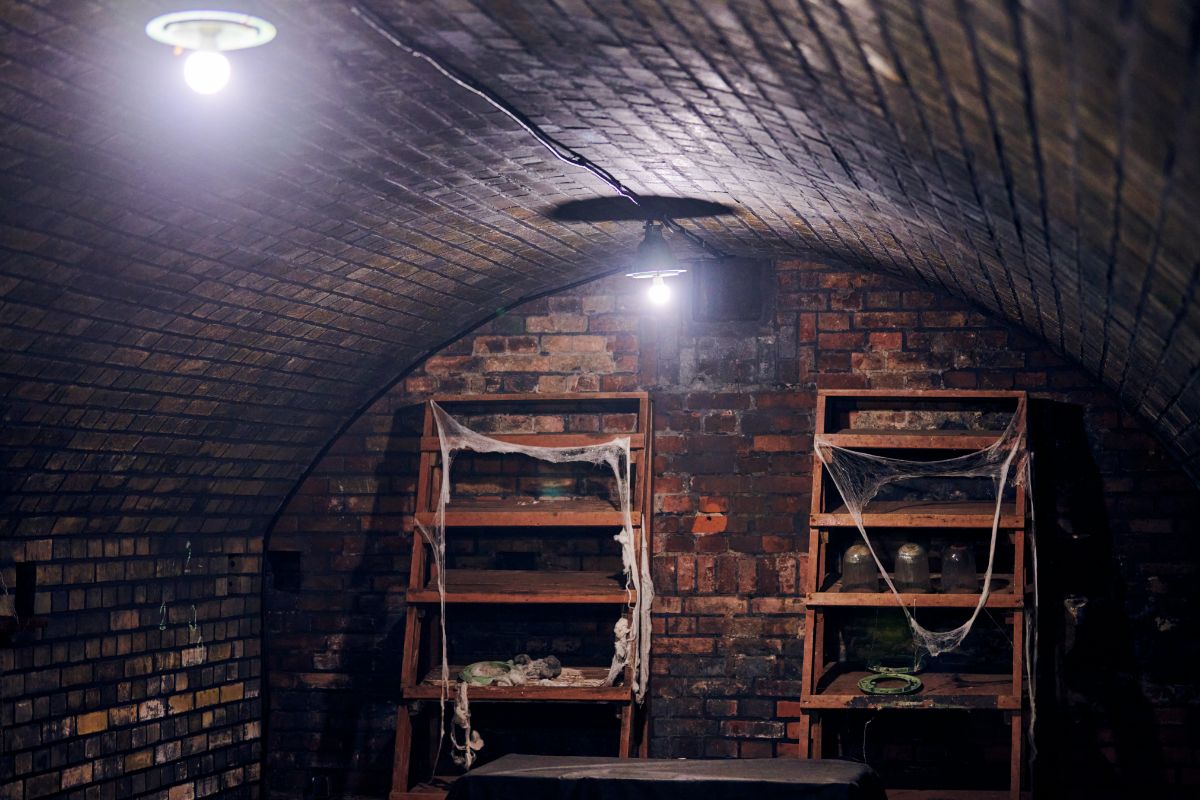As far back as there has been civilization, there has been the idea of camping or having a camp out.
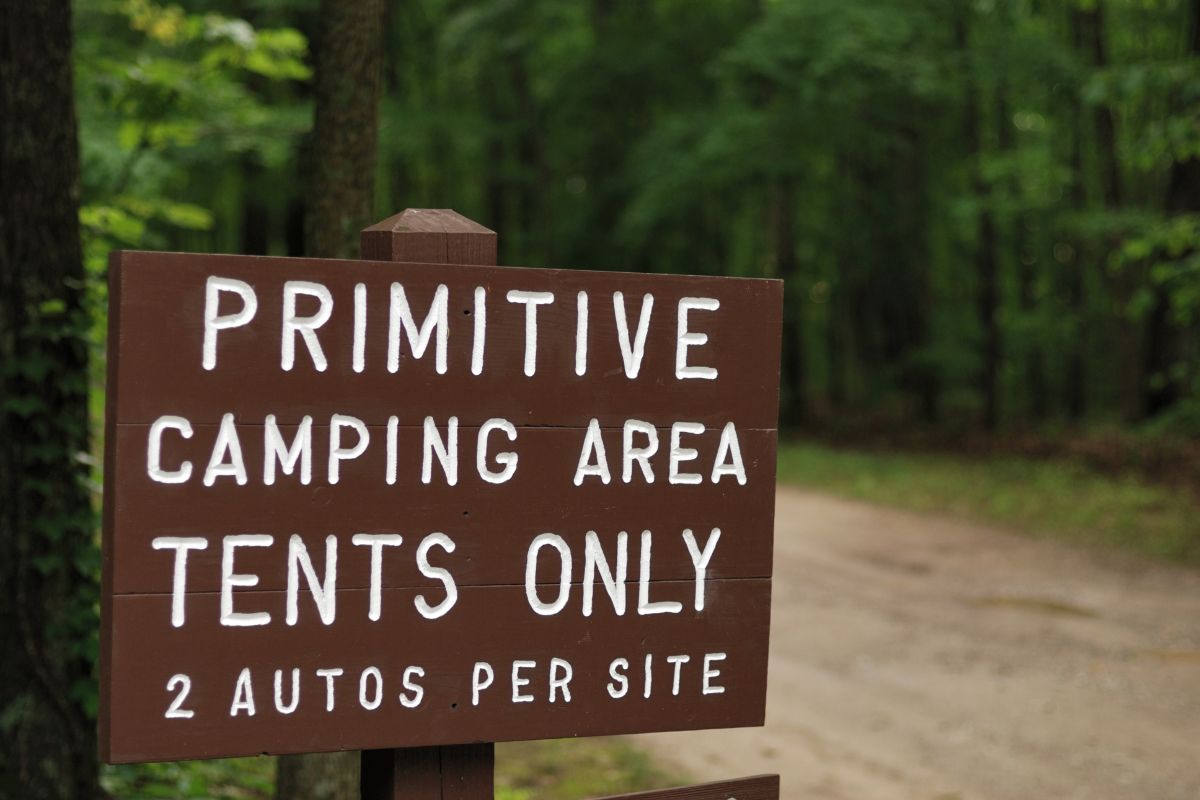
A lot of people love to go into the wilderness and into nature and just enjoy their time amongst the trees.
Even today, this idea holds true, as many people will take time out each year from their busy lives to gather a few key items and wander into the woodland in order to camp.
It isn’t easy, but it is surprisingly freeing, and the peace of mind that comes with just doing the simple things in life is magical.
However, there is more than one form of camping, with the most obvious example being primitive camping.
This form of camping sounds scary when you don’t know what it is, but today we plan to fill you in on what primitive camping is, and you can see whether it is something you would enjoy.
What Is Primitive Camping?
Primitive camping goes by a couple of names – backcountry camping or true camping to name two – but they all fall under the same umbrella.
This style of camping is a back to bare-bones basics type of camping that involves camping out in an area with no access to modern luxuries or any equipment beyond the essential.
You need to be able to pack everything that you need for the time you are away in a backpack.
In a way, it is the complete opposite to glamping or van camping, as these two are about bringing the luxuries of modern life to an area of outstanding beauty.
Primitive camping is about leaving everything that is not essential back home and experiencing the outdoors. One is about gentle relaxation, the other is about the experience.
Can You Primitive Camp On A Campsite?
You can absolutely primitive camp on a campsite, but there are probably going to be some concessions.
For starters, you are not going to have access to some of the amenities that you would normally have on a campsite for normal campers.
This is not about shunning them per se, but more because the areas where you get to enjoy primitive camping the best are going to be in pretty remote and hard to reach areas – basically the most stunning parts of the wilderness.
As such, these areas are probably missing some things. For starters, the camping areas of these sites are not normally set out and strictly designated camping areas.
Instead, they will just probably be a flattened area such as a field where you will be allowed to set your tent or maybe just an area of woodland.
Another thing is that campfires won’t be in grates or clearly defined, they will probably just be a charred section of ground with stones around it to stop the fire from spreading.
Other standard amenities that probably won’t be there are running water, trash, or toilet areas, because these types of campsites are not close to pipelines where water can be delivered through or trash collection places.
Essentials Of Primitive Camping
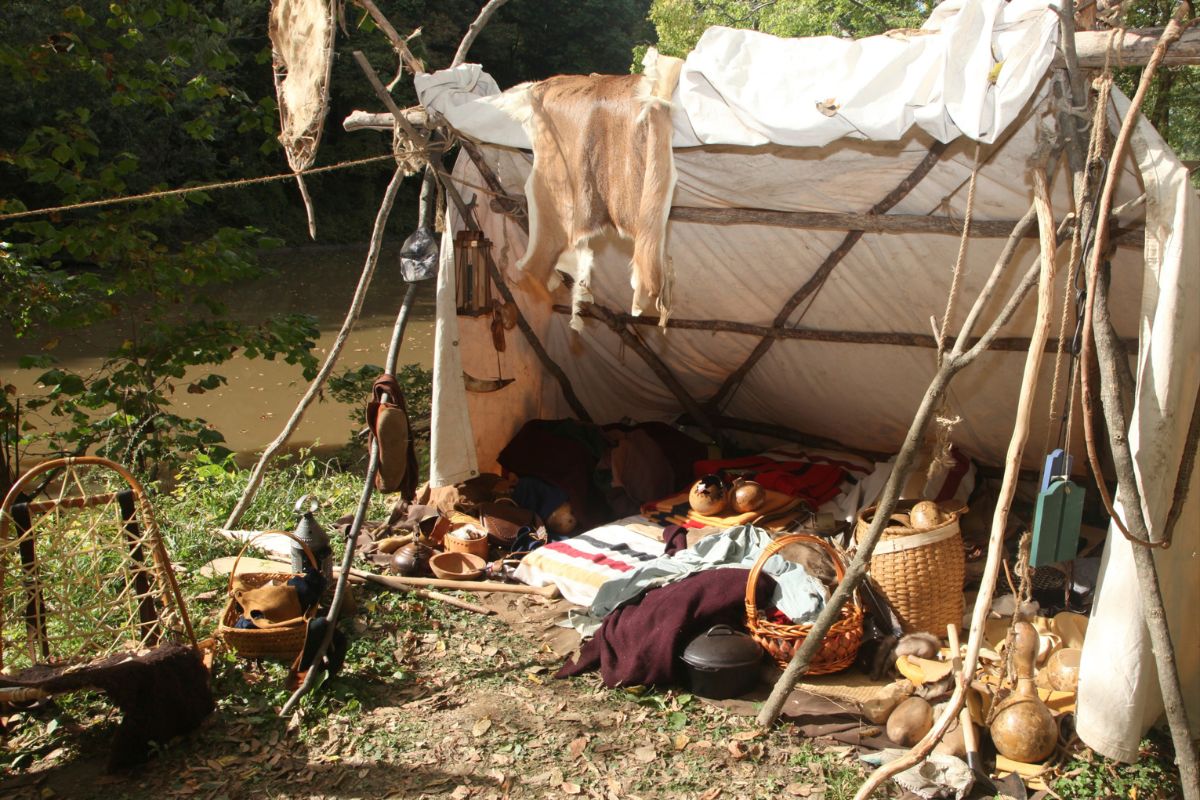
As mentioned earlier, primitive camping is normally pretty far away from civilization.
It is in a bare-bones campsite near a national park or in the wilderness itself, so you always need to have the essentials on you personally.
If you are truly out in the wild, these are the essential things to do or bring with you:
Campsite
You need to consider your campsite, how you will set it up, and where you will set it up before the sun begins to set.
You may think that you will have enough time at sunset, but trust us when we say that you don’t want to be fumbling around in the dark while a cougar growls somewhere in the distance.
For your site, consider how the elements will affect you, the available water sources around you, whether the terrain is safe, and the wildlife that lives in that location.
If you don’t consider all of these things, you may wake up to a nasty shock in the night.
Also, you will need to purchase a backcountry permit before going primitive camping and that you know the regulations of national parks, otherwise you may run afoul of park rangers.
Equipment
Primitive camping means that you need to bring your own essential equipment and survive only using it.
The most important pieces of equipment for primitive camping are: a tent, a sleeping bag, a headlamp, a map, a sunscreen, a first aid kit, a pocket knife, and something to light a fire with.
If you are planning to camp longer than a night, it might also be worth bringing water purification tablets, cooking equipment, and some extra clothes.
However, remember that you have to be able to carry all this on your person for the night – unless you are driving or cycling and camping.
Water
Water is the single most important substance to our continued survival. You can last almost two weeks with no food. You can last three days with no water.
When you primitive camp, always assume that you will not have proper access to drinking water.
There are a couple of options for getting clean drinking water: bringing clean drinking water, water purification tablets, or buying a LifeStraw.
The last two are very good options if you are hiking in a place with plenty of access to water, like near rivers or streams.
Bringing water can be tricky as you will need to bring a minimum of two liters for each day you are camping.
Bringing less risks dehydration, which can cause you to make poor decisions which you do not want.
The best option is to bring all three with less drinking water than you would normally bring, just in case.
There are other essentials as well – like food, toiletries, and knowledge of how to build a fire – but these three up top are the absolute essentials that you should always consider.
Conclusion
Primitive camping is a true joy to do, but it does require a little patience and practice, before you get right into it, but once you get the feel for it, you won’t stop.
- How To Make A Quick And Easy DIY Toilet For Camping - September 19, 2022
- How To Use A Knife For Self Defense - September 19, 2022
- How To Help The Elderly Recover From A Disaster - September 19, 2022

